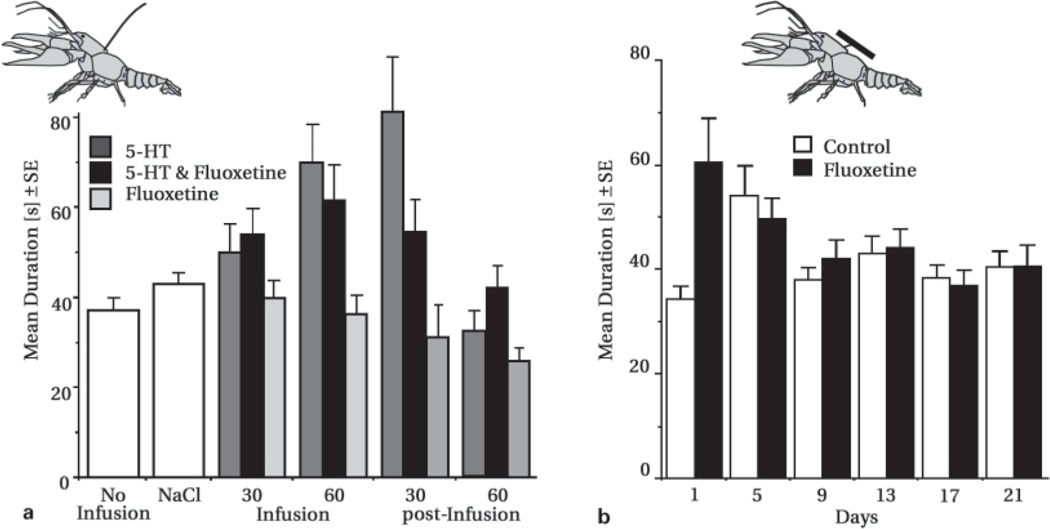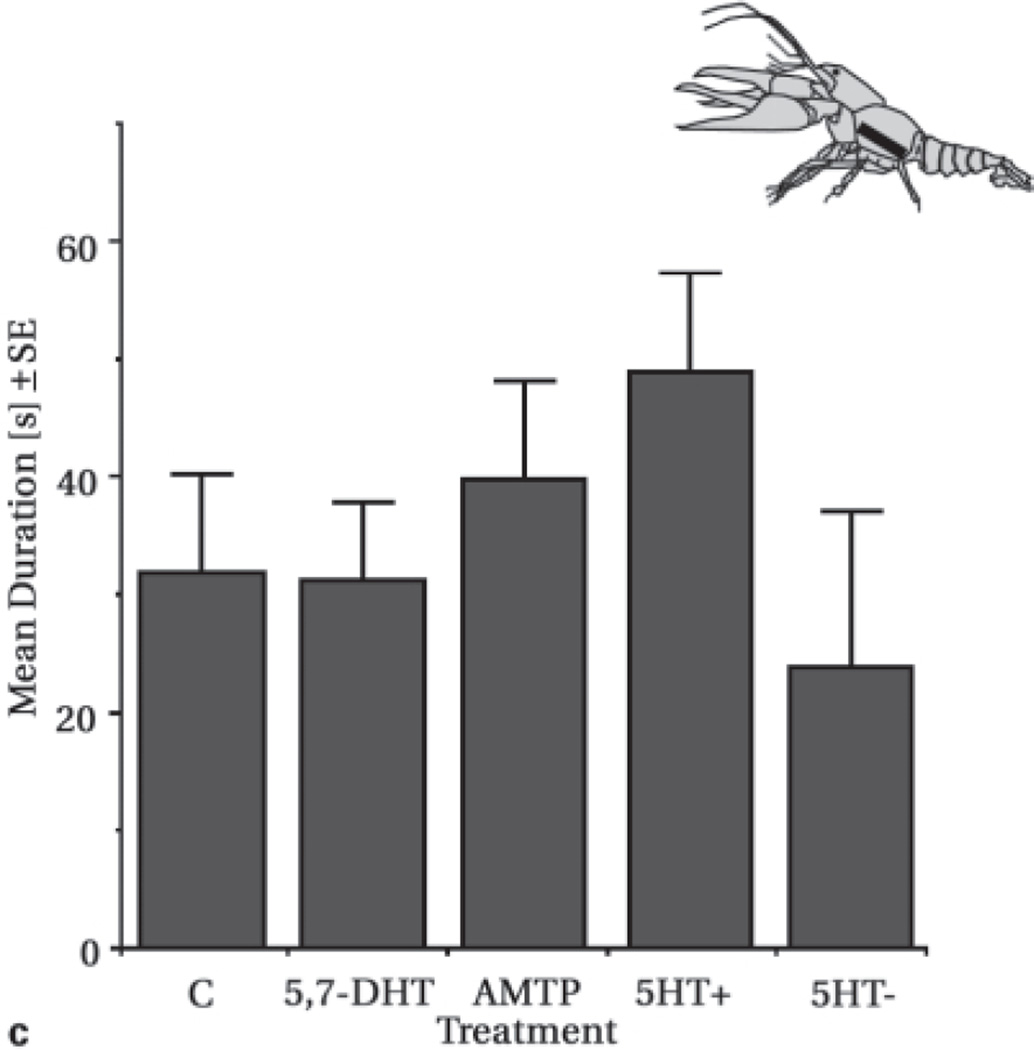Fig. 2.
Composite figure illustrates differences in fight duration resulting from pharmacological manipulations of crayfish serotonin systems. a Fine-bore fused silica capillaries were used to infuse serotonin, fluoxetine or both substances together into freely-moving, subordinate animals (all infused at 3 µg/min). Serotonin infusion resulted in longer fighting that persisted well after the infusion pump was turned off (F(5,2888) = 14.777, p < 0.001). Multivariate statistical techniques (i.e. discriminant function analysis) revealed that longer bouts of fighting resulted from a decreased likelihood of retreat. Infusion of fluoxetine alone did not enhance aggression (F(5,2513) = 1.130, p = 0.342), however, co-infused with serotonin resulted in a pronounced reduction of serotonin fight-enhancing effects (F(5,2941) = 7.653, p < 0.001). b Chronic infusion of fluoxetine via osmotic minipumps increased duration of fighting during the early stages of treatment compared to animals receiving vehicle only ([treatment] F(1,2642) = 22.160, p < 0.001; [day] F(5,2642) = 2.9463, p = 0.018; [treatment*day] F(5,2642) = 3.724, p = 0.002). As with acute serotonin infusion, these differences in fighting were due to a decrease in the probability for retreat. c Duration of fighting in individuals which received chronic silastic implants containing either 5-HT synthesis inhibitors (5,7-dihydroxytryptamine or alpha-methyltryptamine) or serotonin at one of two different rates. No significant differences in fight duration existed among these groups (F(4,314) = 1.06, p = 0.374).


